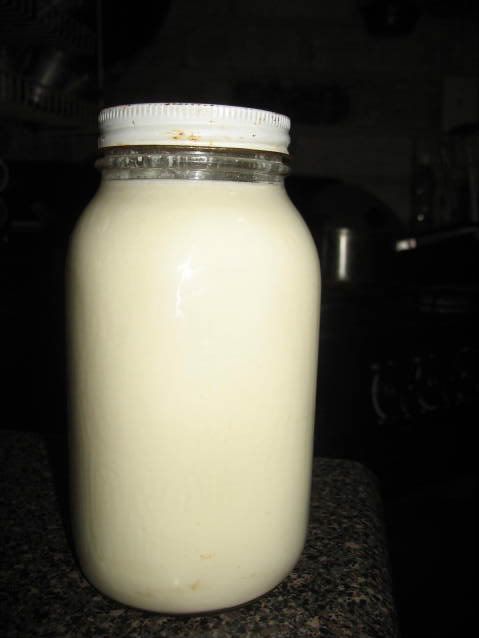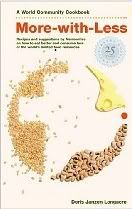So, I just spent the past 3 hours widening the columns of my blog. I'm so inept. There are two basic problems here:
- I'm a perfectionist and when things are out-of-balance, it really bugs me. Little dotted lines in the wrong place bug me. Uneven margins bug me. My daughter Sarah would say, "Get over it, Mom."
- The only computer class I ever had was in highschool. Mrs. Sharp's geek study hall where Joey and Scott and Jeff (the REAL computer whizes) would dink on the computers and I would hover around and watch. That's back when Appleworks was the thing. oooOOOooo
Well, at least I haven't accidentally erased my entire blog...yet.
Well, on to the subject at hand -- not everything in life is as difficult as HTML. Thank you, Lord!!!
Take yogurt, for instance. I really like everything about yogurt...except the price. Here, a liter of yogurt (basically a quart) costs right about $2. That's if I buy it by the quart and not in individual containers. Those little "yogurt cups" you buy in the store cost about $.60 each. Multiply that by 8 and you get a family which doesn't each much yogurt. Until I learned to make it myself.
I never dreamed making yogurt would be so easy!
What you need:
- 1/2 cup plain yogurt
- 7 cups milk (any variety -- I've used fresh from the cow, fresh from the goat, fresh from the grocery store and shelf-stable boxes of "Nutri-Leche" which is only part milk and not at all fresh. The recipe I used actually called for dry milk and a can of evaporated milk.)
- 2 clean quart jars with lids
- a thermometer -- I use a meat thermometer
- An Igloo Little playmate cooler or another small cooler which will fit two quart jars standing up.
While the milk is cooling, sterilize your jars and lids. You can do this by putting them in a pan of boiling water for a few moments or you may fill them half-way with water and put them in the micro on high until the water boils. Careful! The jars will be hot. You can say, "Duh" if you want to, but I need to be reminded of things like that.
When milk is at the desired temperature, pull out 1 cup of milk and combine that cup with the 1/2 cup plain yogurt. Mix well.
Return the yogurt mix to the pan of warm milk. Mix well with a wire whisk (or just use a spoon).
Pour mixture into the sterilized jars and put lids on snugly, but not too tight.
You're basically done. Put the jars in your cooler, and fill the cooler with water that is at least 110 but not more than 120 degrees. I aim for about 118.
Set your cooler in a corner where it won't be disturbed and cover it with a heavy towel. Set your timer for 3 hours and go do something else. Don't disturb the yogurt while it is setting.
After 3 hours, check your water temperature. If it's still within the range of 110 and 120, re-cover and forget it for another hour. If it's cooled down, add warm water to raise the temp back up. Check it every hour until it "sets" (anywhere from 6 to 8 hours).
Put it in the fridge to chill.

The finished product probably will not be as thick as what you purchase in the supermarket. Most store-bought yogurts also contain gelatin to make it thicker. To thicken, dissolve 1Tbsp. gelatin in 1/4 cup hot water. Cool to 120 degrees and stir into 1 quart yogurt. Chill.
Personally, if it doesn't set up, we just drink it! ;^)
I've used this as yogurt, frozen it in the ice cream freezer, added it to milk shakes, put it over pancakes, and used it in place of sour cream on tacos. Very versatile food!
I don't know what you pay for milk, but the time I had to buy "boxed milk", this yogurt cost about $1 per quart. Isn't that about the same cost as milk? It is here. Those of us with access to goats or cows will pay about $.25 per quart. That's a cheap snack!
Editor's addition to this post, March 20, 2015:
***So, here I am 6 years later and still making yogurt with basically the same recipe. HOWEVER, I've made a couple of changes that those of you who really want to MAKE. YOGURT. will appreciate...
#1: I use a large ice chest and make the yogurt in gallon containers.
#2: I let the yogurt set for 24 hours instead of only 3.
- So, bring your milk up to 190 and hold for 30 seconds.
- While it is cooling to 120 (because over 120 will kill yogurt cultures), sterilize your jars and lids and fill your ice chest with a few inches of 120 degree water.
- When your milk has reached 120, mix in 1/2 cup active yogurt cultures for each gallon of milk.
- Pour warm milk into sterilized and COOLED jars, (remember that magic number 120) and snugly lid them.
- Place your warm jars of pre-yogurt into your 115-120 degree ice chest. Put the lid on the ice chest and stick it someplace where it won't get opened, bumped, moved or knocked over for 24 hours.
The best part about this process is the non-fussiness of it. I really don't have time to watch the yogurt set and guard its temperature, so leaving it in the ice chest overnight was a great discovery for me! If for some reason, it's too runny in the morning, just lid the chest again and check it in a few hours, but I think you'll agree that this process is a real winner!
Let me know how this works for you!! Do you have another easy method? How does your family like to eat yogurt?









